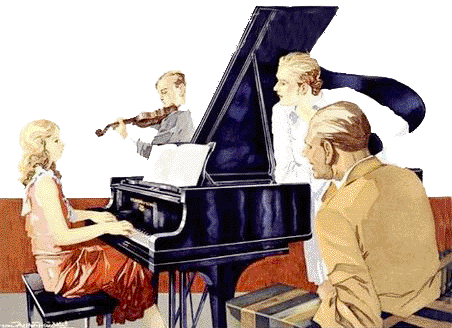|
|
|
|
A variety of signatures appear on von Axster-Heudtlass' work. The earliest poster I have found (excluding that simply signed "von Axster") is signed "AXSTER HEUDTLASS", but I have not come across any others signed in this way. In general, posters are signed "von Axster-Heudtlass", though some (smaller examples) are signed "Ax-Heu". Postcards occasionally show the full signature, but are mostly signed "Ax-Heu". One exception is signed "von Axster-Heudtlass SA-Sturmhauptfuhrer", the latter indicating a rank (equivalent to Captain) in the Sturmabteilung (a general "home front" auxiliary). One postcard is simply signed "VAH". Stamps either bear a discrete "VAH" within the design, or "AXSTER HEUDTLASS" printed under the design. The KdF Organisation The NS Gemeinschaft Kraft durch Freude, the National Socialist Organization Strength through Joy, was a subset of the Deutsche Arbeitsfront, the national German labour organization. The KdF was primarily set up for the purpose of providing organized leisure for the German work force, the motive being "relaxation for the collection of strength for more work." The KdF pursued this goal by providing activities such as trips, cruises, concerts and cultural activities for German workers. Specifically directed towards the working class, it was believed that the labour force could be made more flexible and productive through such activities. KdF programmes included affordable international cruises provided by an fleet of KdF liners and smaller pleasure vessels. Trips were organized to the coasts of Norway, Spain, and Italy, as well as to destinations on the Baltic Sea, and the German and Danish coasts. The KdF also sponsored and organized a wide variety of other activities, including retreats, day trips, tours, concerts, theater and opera performances, art exhibits, and other cultural and historical displays and events, plus it allowed workers to take vacations and paid holidays. A major activity of the KdF was an attempt to make a car a reality for as many Germans as possible. To this end, the KdF-Wagen was created (designed by Ferdinand Porsche) and a system of regular stamp purchases instituted to allow workers to buy the vehicle by installments. No private cars were ever delivered under this scheme due to the intervention of the war, though military versions were produced. The KdF-Wagen subsequently found considerable fame as the Volkswagen Beetle. The KdF was never a paramilitary organization like many of the other
auxiliary groups of the period. It existed solely to provide pleasure
and relaxation, initially to German workers, and later to Wehrmacht
troops as well. The overall goal was to create and mould a controllable
work force, but as a result it also provided millions of Germans with
experiences previously denied to the average person. The SA The Sturmabteilung (SA, German for 'Assault Divison' and sometimes translated as stormtroopers) functioned as a paramilitary organisation of the NSDAP - the German Nazi party. It played a key role in Adolf Hitler's rise to power in the 1930s. SA men were often known as 'brown shirts' from the color of their uniform and to distinguish them from the SS who were known as 'black shirts'. Hitler founded the SA in 1921 in Munich. It originally functioned as a group of bodyguards to enforce order at Nazi gatherings. Under their popular leader Ernst Röhm the SA grew in importance within the Nazi power structure, eventually claiming thousands of members. The SA carried out numerous acts of violence against socialist groups throughout the 1920s, typically in minor street-fights. The SS eventually took over their original role. After Hitler took control in 1933, the SA became increasingly anxious for power and saw themselves as the replacement for the German army. This angered the regular army (Reichswehr) who were already disenchanted with the Nazi party, ands also led to tension with other leaders within the party, who saw Röhm's increasingly powerful SA as a threat to their own personal ambitions. In order to ally himself with conservative forces within the German
Army and to strengthen his position within the Nazi Party, Hitler ordered
the execution of the leadership of the SA, am event which took place
on 29 - 30 June, 1934 on what is known as the 'Night of the Long Knives'.
Following these events the SS was separated from the SA and made an
independent organisation, a reward for their services, as was the NSKK.
The SA was not disbanded following the purge, but did not have any real
responsibilities until the war broke out. It was then made responsible
for the military training before and after military service and, in
effect, acted as a sort of 'Home Guard'. Links There are numerous sites - some better than others - that deal with German propaganda and other posters and related art from the 1930s and 1940s. The sites listed below are particularly useful ones.
|
